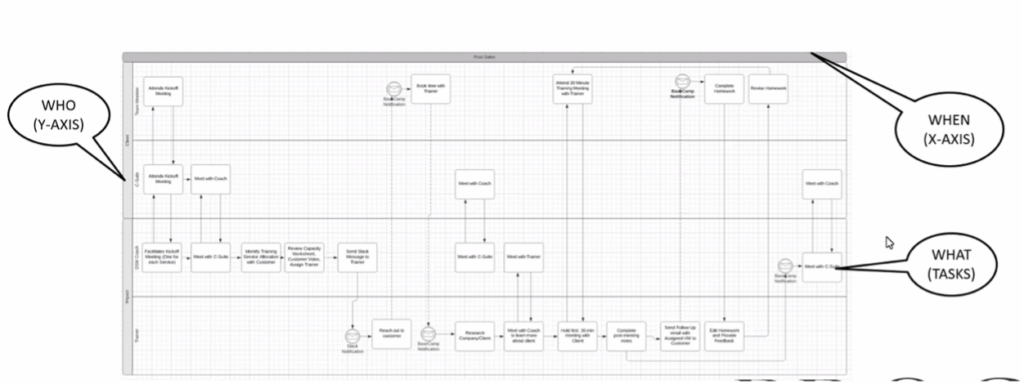Recently, Petra Coach presented a webinar, Mastering Process Improvement: Tools, Techniques, and Overcoming Challenges with Hilary Corna.
You can find the full recording below.
Top Takeaways
The Importance of Process Excellence
- Competitive Advantage in a Dynamic Market
- Companies with mature operational excellence programs achieve 23% higher profitability and 19% faster revenue growth compared to their peers
- Customer Satisfaction
- 88% of customers are more likely to return to a business after a positive customer experience
- Agility and Adaptability
- Employee Engagement and Productivity
- Employees who understand and are involved in process improvement initiatives are 27% more engaged and productive
Problems with Current Approaches
- Too big
- Too complex
- Not designed for non-manufacturing businesses
- A lot of wasted time in unproductive meetings
- Mostly focused on “documentation”
The 3 Key Process Tools
Customer Life Cycle – “The Why”
- A more sustainable and predictable business
- Earn the right to customers for life
- Develop a hidden strategic advantage
PDCA Process – “The What”
- People tend to want to jump to step 5 & 6 without doing the “plan” steps
- Steps 1-4 are your concrete roadmap
The goal is to create a PDCA Wheel.

PDCA Steps
The Strategy
Rollout Version Control
- Start with V.1
- Each additional PDCA cycle reduces in time
- Just like a phone rolls out software updates in bulk, GoLive with process updates in bulk
- Over time, this standardization creates your company “Way”
The Kaizen Strategy
Why
- Not all problems can be solved in V.1
- Not all problems are equal in importance or urgency
- Not aiming for temporary fixes
- Not erratically “taking action” that causes disruption, disjointed change, and un-sustained processes
The Human Way
Goods and Information Flow – “The How”
- Defined: A one-page master flow chart method across all department touchpoints that visually depicts the sequence of goods and information in a planned business process from end to end
What Makes a Goods & Information Flow Different?
- It is sequential in time
- It includes customer perspective
- It shows cross-functional dependencies
- It shows what is happening, now how it’s happening
- There is only one per company
Cyclical Operations vs. Linear Operations
Linear Operations
- Not aware of what others are doing
- Difficult to know when one dept changes
- Only some connected to the customer
- Creates inconsistent experiences
- More “finger-pointing”
Cyclical Operations
- Syncs departments
- More effective initiatives
- Less disjointed processes
- Highly empathetic
- More gaps surface faster
- More objective
- Depersonalized
“No one has more trouble than the person who claims to have no trouble.” -Taiichi Ohno
Putting Them Into Action
Definition of the “Problem”
- Problem = the gap between the ideal situation and the current situation
Problem Prioritization
- Steps 3-8: Identify and Prioritize Problems to Standardize Successful Processes
- Use one master worksheet for each step
The Employee Experience
“It’s not what we change. It’s how we change.” – Hilary Corna
Resources
Template for Goods & Information Flow
The Free Process Improvement Worksheet
Like what you see? Register for our upcoming workshops & webinars today!














